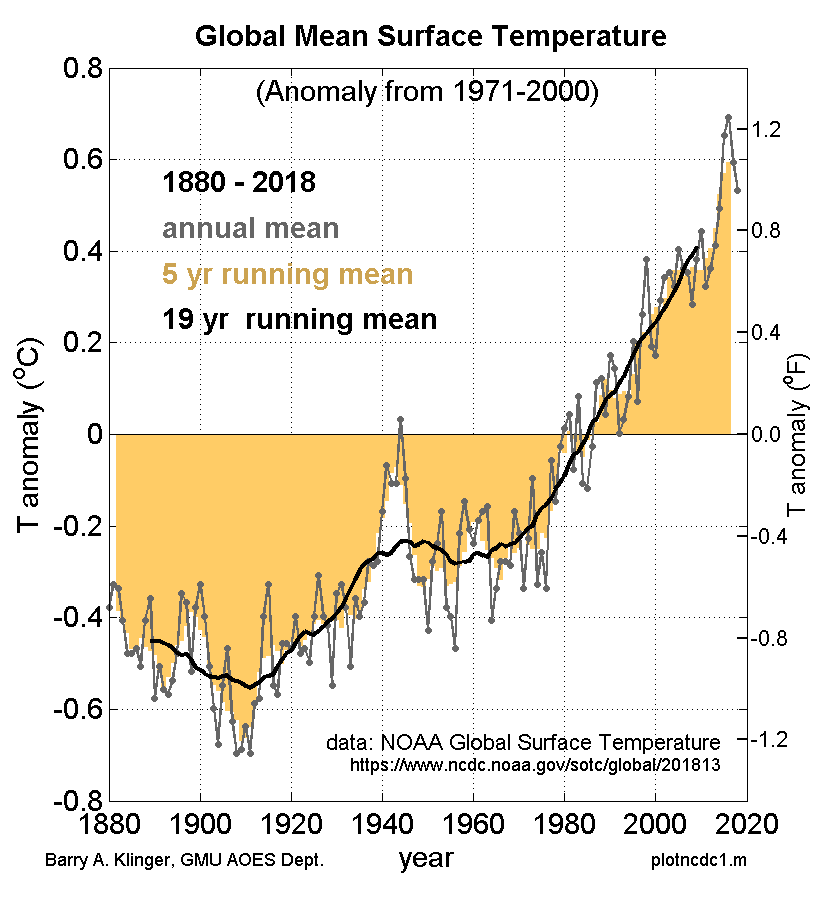
The main measure of "global warming" is the global mean surface temperature (GMST). This temperature is always fluctuating, so the answer to "Is the world warming?" depends on whether we are talking about the last month, the last year, the last century, or the last millenium.
As the figure shows, annual average GMST goes up and down by about .1 C from year to year. If we average five years at a time, we filter out much of this year-to-year variation to focus on longer-term trends. This shows that the generally upward trend has been punctuated by "pauses" in the warming such as in the early '80s, early '90s, and 2004--2013. 1998 was especially warm, but cold years immediately before and after 1998 made the 5-year mean lower than in the 2000s. The upward trend has lasted for most of the 20th century, with a longer pause from the 1940s to the 1970s.

Global warming is not confined to the Earth's surface. Temperature measurements throughout the bottom 10~km of the atmosphere also show warming, as do ocean measurements below the sea surface. Models predict cooling in the stratosphere (above about 10~km height), and this has also been observed.
Next: What sets global temperature?Last modified: 21 July 2018